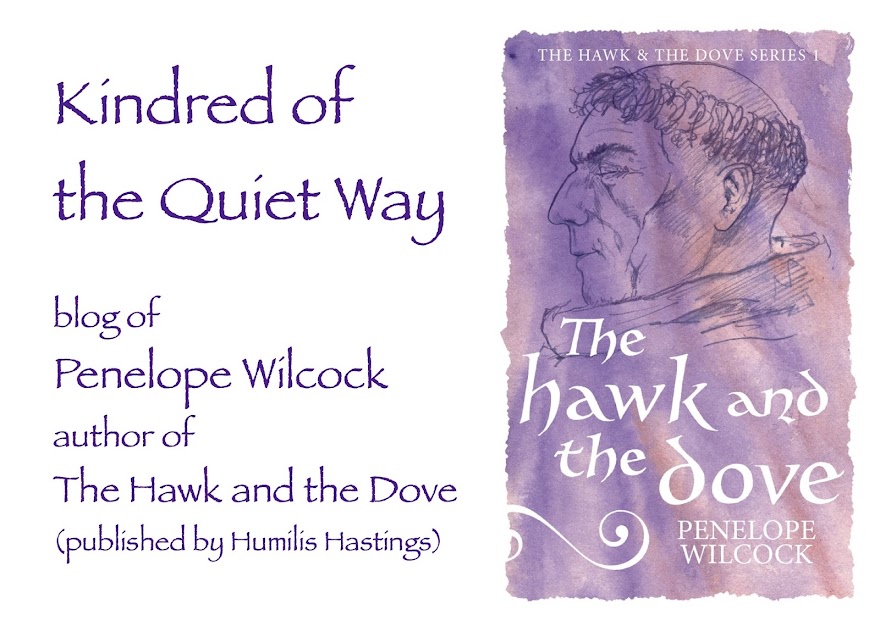I live on the south coast of England, where the weather is much warmer and gentler than in the north. Even so, we have the three of four seasons requirements of our clothing.
Typically, January is deeply cold and frosty; if it snows, it's most often in January.
February is a very cold month, and usually has light persistent rain most of the time. It's the time when the light returns, a good spring-cleaning month as the lemon-juice sunshine illuminates all the cobwebs! The snowdrops (Fair Maids of February) are in bloom. The ramsons are up.
March is a blustery month — very cold, sharp, north-easterly winds — and often bright, clear, joyous sunshine. The daffodils are up and blooming.
April is the month when as a young woman I determinedly wore my new summer dresses and felt absolutely freezing cold. Definitely springtime, but definitely still very cold. Still the month for daffodils and tulips, and the fruit trees also coming into blossom — cherries first. Late frosts sometimes catch the blossom before it sets.
Then May brings the greening of England — all the trees coming fully into leaf, and the woods glorious with bluebells. The lilies of the valley come into bloom.
June is high summer, the zenith of the light at St John's tide over the summer solstice. The trees come into full canopy, and all the plants like green alkanet and Queen Anne's Lace and comfrey and ragged robin and Traveller's Joy and feverfew and heal-all and eyebright and everything are in bloom. It can still be a cool month, but also blazing hot. It can be rainy — or not. I've even known it snow in June!
July is usually a hot month. The soft fruit like strawberry, cherries and raspberries continue, that began to appear in June. The beans and courgettes and tomatoes start to be ready.
In August the summer begins to turn, the grass often going brown in the heat, the trees still in full canopy but a different sniff to the wind. It can be a turbulent month, with electrical storms and a surprising amount of rain.
September is a golden month — time for the grain harvests. Of all the days in any given year, the one most likely to be fine and warm and dry is September fourteenth. It's a lovely month — long, warm evenings, very mellow. The nights freshen with lower temperatures towards the end of the month, bringing the gold and red colours to the leaves of all the deciduous trees.
October is blustery and wild, with wind and rain storms; very invigorating and refreshing, time to get out coats and sweaters as the last leaves are blown from the trees.
November is often drizzly and misty, the frosts begin and the nights draw in. It can be still surprisingly warm right into mid-November, but at that point the subtle change from autumn to winter takes effect.
December is often warmer than either November or January, often quite a dry month with less wind. Sharp frosts at night and clear, starry skies very often — great for carol-singing! The winter solstice (Yul) comes just before Christmas, and after that the light returns by twenty minutes every week.
So our weather is quite variable!
Micro-fleece, while being bad news for the oceans by shedding tiny plastic fibres into the water-courses that eventually get absorbed into our bodies via the food chain, is very handy for the many English days characterised by light drizzle and chilly wind (autumn, spring). Indian cotton and linen are perfect for the high summer. But now, as we go into the coldest part of the year, layered wool is the very best thing. If you layer cotton, the result is often heavy and restrictive of movement. If you layer micro fleece your skin can't breathe and it feels suffocating. But layered wool is cosy without being too hot.
Today, I have a long-sleeved cotton t-shirt, and over that a medium weight cashmere cardigan buttoned up to wear like a sweater, and over that a longer, heavier cashmere cardigan worn open. And even in my north-facing room with no heating, my nose is cold but I am comfortably warm. I have snuggly micro-fleece trousers and very cosy slippers.


5 comments:
I love your snuggly clothing. It looks soft and comfortable.
Yes, soft and comfortable is the only kind I do! I once met a woman who mentioned casually in conversation that of course you do expect you clothing to be tight and uncomfortable, even sometimes painful, and I thought "WHAT??" I think she meant those tummy control underwear and high heels and underwired bras and close-fitting tailored jackets . . .
I'm a fan of layering my clothes. (But not my hair because it's thick & wavy, and layers make me look like Crystal Tipps - without Alistair!)
I have lots of plain navy long-sleeved T shirts over which I also wear neat, brightly- coloured, buttoned up cardis.
However, I've never tried cashmere. Although it's expensive my main concern is about shrinking during washing. I washed my husband's only pure wool jumper and it ended up being the right size for my 4 year old grandson!! My husband was very understanding. :)
Kay
You do have to be careful washing cashmere, Kay. I wash mine very rarely, by hand, with shampoo, in cool water, and line dry it. It is indeed very expensive: I wait patiently for eBay bargains, secondhand at auction from private sellers, to get the best price.
I love the sound of your navy tees under colourful cardis. I can just imagine it — perfect outfit!
I had to look up Crystal Tipps!
Post a Comment